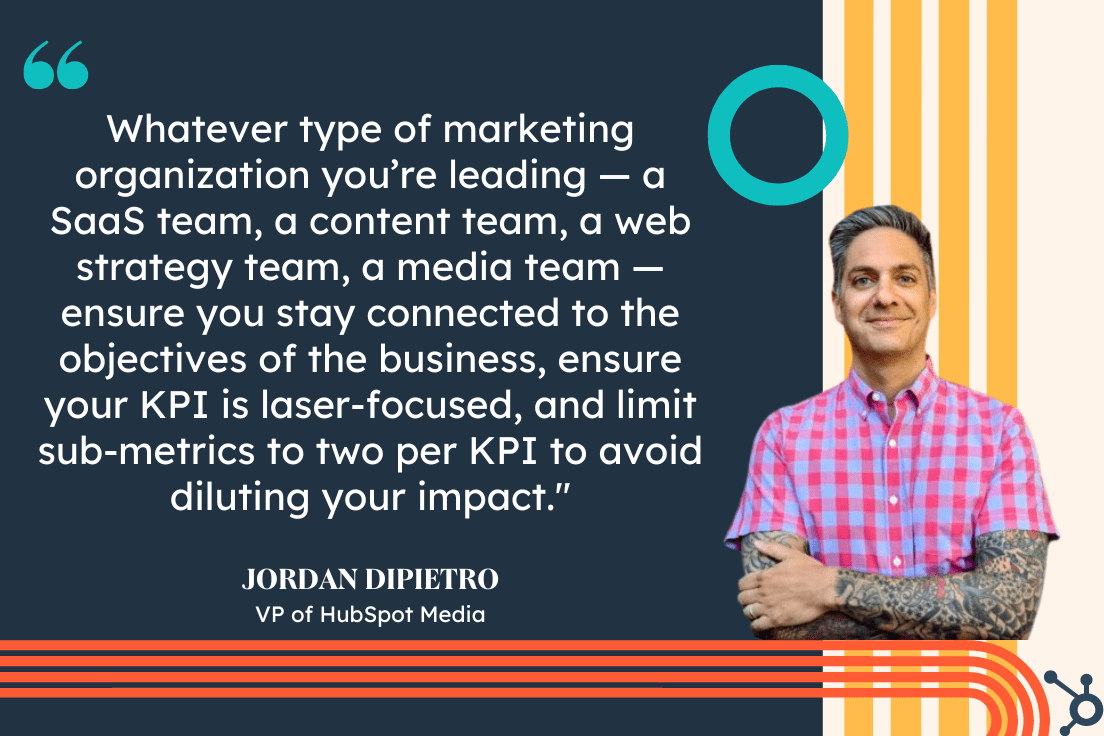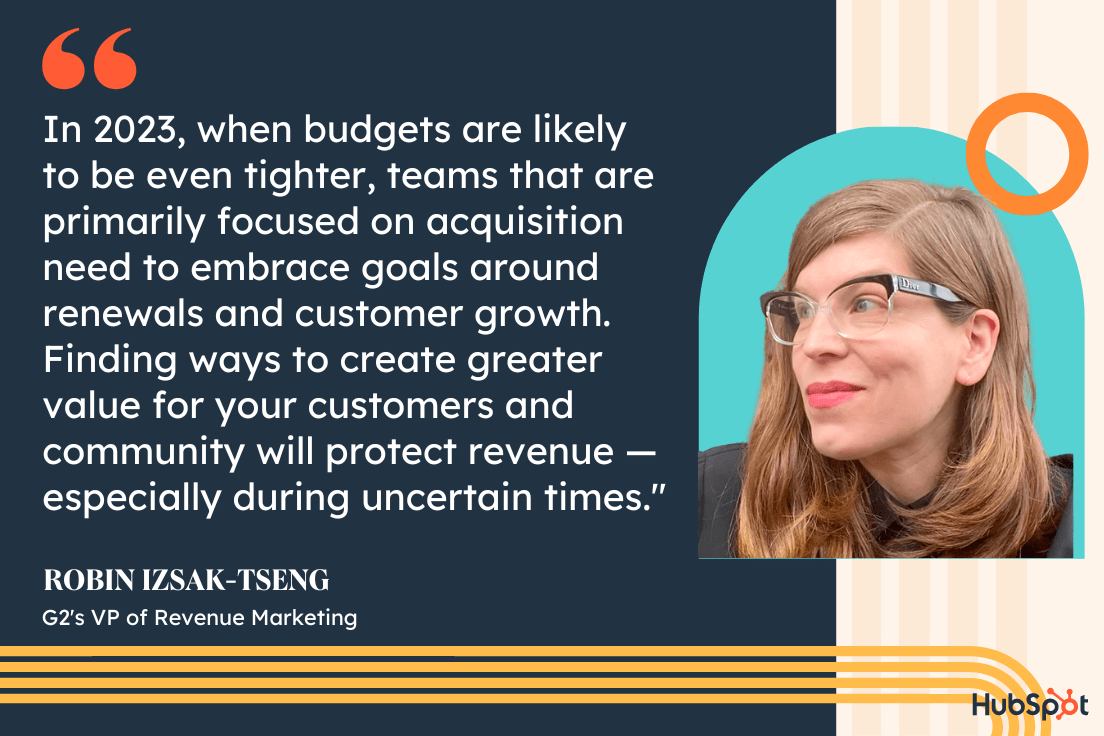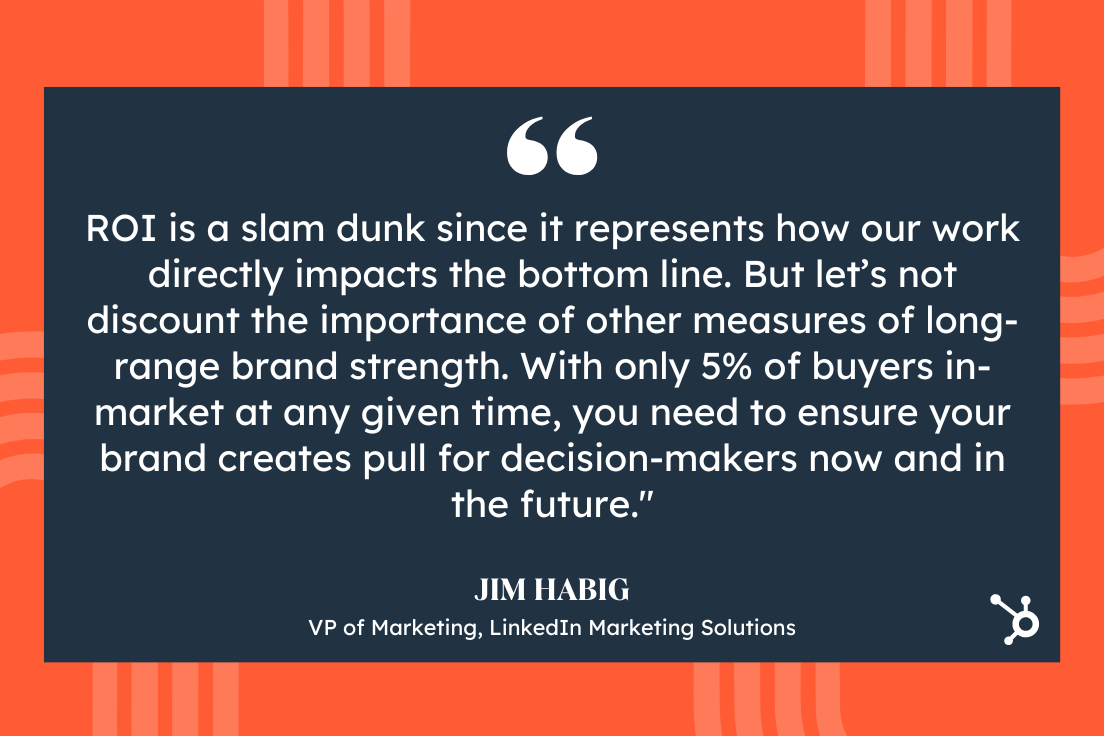How to Get Buy-In from Some of the Top Marketing Leaders: 3 Execs Discuss What KPIs Matter to Them
Whether you're creating a new content campaign, launching a YouTube series, or revising your social strategy, you're going to be asked the same question by leadership before getting their support: "How will this impact our company's bottom line?"

Whether you're creating a new content campaign, launching a YouTube series, or revising your social strategy, you're going to be asked the same question by leadership before getting their support: "How will this impact our company's bottom line?" That can be a difficult question to answer — which is why it's critical you know your key performance indicators (KPIs) to: a) measure the success of your program, and b) receive executive buy-in — which is typically a prerequisite for getting the budget and resources you need to successfully launch any new paid marketing program. There are so many different KPIs any marketer might use to measure success, including sales, web traffic, follower growth, conversion rate, or brand awareness. But which ones matter most to leadership? In other words: Which ones should you focus on if you're seeking executive approval? Here, we spoke with executives at LinkedIn, G2, and HubSpot to uncover which KPIs matter most to them in 2023. If you work backwards from your company's primary goal — of increasing revenue — then it makes sense that reaching new audiences and converting those audiences into qualified leads for sales would be two of the top KPIs that matter most to marketing leaders. As Jordan DiPietro, HubSpot's VP of Marketing, told me, "As a marketing leader, it’s important to choose a KPI that is most aligned with your company’s overarching business objectives — it could be a revenue metric, it could be a reach metric, or in the case of HubSpot Media, it could be both! The important thing is that your KPIs and the action plans associated with those KPIs are ones that can be directly connected to the KPIs of the business." For instance, DiPietro told me the two KPIs his team focuses on are overall reach (visits, opens, listeners, and views) and leads (net new contacts driven from media content). He says, "Our reach KPI is indicative of the fact that HubSpot wants to grow top-of-the-funnel awareness for the business. Our media team does this by increasing the reach of our blog content, newsletters, podcast network, and YouTube network." He adds, "Our revenue KPI is indicative of the the fact that HubSpot is a SaaS business — so we want to generate leads that can be shared with the sales team in order to turn those leads into qualified leads, and then into satisfied customers." When deciding which KPIs to focus on — whether you're a marketing leader or individual contributor looking for buy-in — you'll want to consider which metrics will directly connect to your organization's broader goals. For instance, if your company is hoping to improve its customer retention, then you'll want to focus your marketing efforts on KPIs like brand sentiment and churn rate. But perhaps most importantly — don't choose too many KPIs. As DiPietro told me, "In terms of secondary KPIs, keep it simple. I’ve noticed that sometimes marketing teams can get too distracted by measuring and tracking and not focused enough on actual impact. So I think it’s fair to have a main KPI, and then I limit it at two sub-metrics." DiPietro provides two examples of this. In one, let's say you're running a newsletter company that relies on advertising. In this situation, your main KPI is likely ad revenue, and your two sub-metrics might be subscriber growth and unique opens. Alternatively, if you have a subscription business, your main KPI might be overall revenue, and your two sub-metrics could be LTV: CAC and renewal rate. DiPietro advises, "Whatever type of marketing organization you’re leading — a SaaS team, a content team, a web strategy team, a media team — ensure you stay connected to the objectives of the business, ensure your KPI is laser-focused, and limit sub-metrics to two per KPI to avoid diluting your impact." Ultimately, marketers are only one part of the equation. Which means marketers can only pay attention to the KPIs they can control: Namely, leads and conversions. As Robin Izsak-Tseng, G2's VP of Revenue Marketing, puts it, "Though most marketing teams have goals around pipeline, the fact is, marketing doesn’t open pipeline — sales does. Marketing’s role is to create awareness, demand, and inbound interest in your solution. There are factors outside of marketing’s control (changes in sales processes, for example), which can cause wild fluctuation in pipeline production." Rather than focusing on pipeline, Izsak-Tseng suggests marketers focus on two primary metrics: MQLs (Marketing Qualified Leads), and conversions. For starters, she says marketers should track a blend of metrics, including MQL production, as an indicator of inbound interest. It's equally critical that marketing leaders pay attention to SAL (sales-accepted leads), since that is another indication of lead quality. A few other metrics Izsak-Tseng suggest marketing leaders focus on include: Izsak-Tseng adds, "All of these metrics give growth leaders a view of the full funnel and help us understand marketing’s impact on revenue (not just pipeline). Much of this can also be applied to retention. In 2023, when budgets are likely to be even tighter, teams that are primarily focused on acquisition need to embrace goals around renewals and customer growth. Finding ways to create greater value for your customers and community will protect revenue — especially during uncertain times." Considering it costs 5-25X less to retain customers than capture new ones, it's a good idea to focus on customer retention as a primary KPI. But customer retention isn't always easy. To satisfy and retain more customers, you'll need to: (P.S. Already a G2 customer? Click here for 20% off eligible HubSpot products, or get started for free.) During times of economic uncertainty when businesses' budgets are tight, it's become increasingly important to be able to demonstrate the ROI of your marketing efforts to your leadership team. In fact, one-third (33%) of marketing executives, VPs, and directors say that using data to demonstrate the ROI and business value of their efforts became more important in 2022. Jim Habig, VP of Marketing at LinkedIn, agrees that ROI is important — but he encourages marketers to think full-picture when they're considering their top KPIs, too. As he puts it, "It’s paramount that we think about the full funnel when it comes to measurement. Of course, ROI is a slam dunk since it represents how our work directly impacts the bottom line." He adds, "But let’s not discount the importance of other measures of long-range brand strength. With only 5% of buyers in-market at any given time, you need to ensure your brand creates pull for decision-makers now and in the future." To create a strong brand identity, you'll want to: If you've created a brand identity already but need to build brand awareness, consider channels that will help you reach new audiences — like podcasting, or other social media platforms. Alternatively, perhaps you can create a strong co-marketing campaign to build credibility in your industry and generate new leads. Once you're investing in brand awareness, you'll want to measure branded keyword search volume to see how many impressions and search volume your brand is getting. This will help you evaluate your brand awareness efforts over time — if your branded keyword search volume is rising, it's a sign your brand awareness plays are working. While this is a strong starting point, you'll need to do your own research to determine your organization's goals for 2023, as well as your executive team's marketing plans in particular. From there, you can determine how your KPIs for a specific marketing campaign or program might fit in. If you can't see a strong through-line between your own KPIs and the KPIs of the business, it might be time to reassess where you're focusing your efforts and whether shifting your strategy might better impact the bottom line — and help achieve buy-in from leadership.
Act Like a Leader, Think Like a Leader: Data from 500+ Marketing Executives on How to Get Ahead in 2023
What KPIs Matter Most to Execs in 2023
1. Reach and leads.

2. Number of marketing-qualified leads (MQLs) and conversions to sales.

3. Return-on-investment (ROI) and brand strength.


 Lynk
Lynk 









_26.jpg)


![How to Write a Press Release [Free Press Release Template + Examples]](https://blog.hubspot.com/hubfs/press%20release%20%281%29.jpg#keepProtocol)



















![Are You Still Optimizing for Rankings? AI Search May Not Care. [Webinar] via @sejournal, @hethr_campbell](https://www.searchenginejournal.com/wp-content/uploads/2025/06/1-1-307.png)